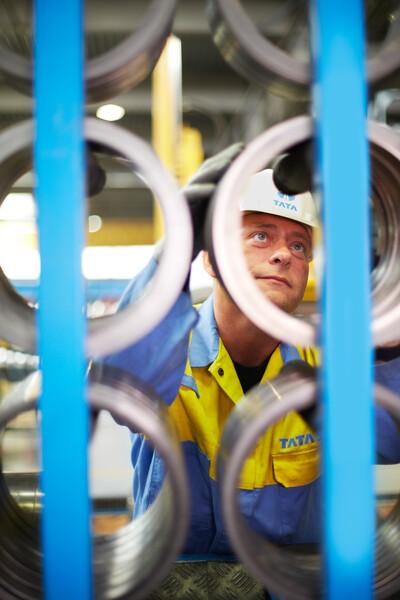A rapidly changing market
Seismic shifts are being felt in the automotive industry at the moment, as the sector works to make its products and its practices more sustainable for the future. This is having a dramatic effect on the materials used in the sector today and in future, not only with regard to material selection, but also the way in which they are sourced and manufactured. The good news for Tata Steel is that this in turn allows us to look closely at how we operate, to ensure we continue to exceed the automotive industry’s understandably high expectations.
In my near-20-year career at Tata Steel – first in R&D, then in marketing, where I am now leading the automotive marketing management function – I’ve been fortunate enough to see how the automotive industry has developed. As a sector, automotive has often been keen to embrace new developments; first there were Dual Phase steels, then the Hot-Press Forming steels, and then third generation cold-formed Ultra High Strength Steels. But the revolution that is currently happening is like nothing I’ve seen before and, moreover, it will lead to change that will be directly visible to consumers.
Sustainable vehicles and value chains
In the past two years, our primary focus as marketing team has been to construct a future vision and 20-year strategy for the automotive sector of Tata Steel. This is something that we will unveil in full over the next few weeks, but below is an overview of our main findings.
Through our work, we have identified three main drivers of change in our industry – sustainability, electrification and digitalisation.
Sustainability and electrification
Even today, it is clear that sustainability and corporate social responsibility are huge drivers for change, not only in the automotive sector, but among industry generally. From EU emissions legislation, to global Extinction Rebellion demonstrations, society is expecting companies to take responsibility for ensuring a greener world for future generations, while demanding more sustainable products and services. This is a challenge being embraced by companies, which are introducing long term sustainability roadmaps and rolling out greener products and carbon compensation schemes to the public.
In the automotive industry, a large part of the environmental footprint of the vehicles is caused by the inherent carbon performance of the materials used. With steel used heavily in the construction of most vehicles, our materials can play a major role in whole life sustainability. This is why we currently develop active partnerships with key customers to collaborate closely on the development of a more sustainable supply chain. On the short term, evidence of this is in our Life Cycle Assessment service, which continues to generate amazing results in helping customers understand the carbon footprint of their products throughout the average life cycle. But in the meantime we are developing new steelmaking technology called HIsarna that will enable vast reductions in the CO2 emissions of steel production from 2030 onwards.
As well as a vehicle’s impact on the environment at the start and end of its life, it is obviously also still important to ensure a vehicle is as sustainable as possible when on the road. The car industry is currently forced to significantly increase the share of electrified vehicles within their fleets. With the EU Commission proposing that 40% of all cars sold by 2030 should be zero- or low-emissions, it is important that OEMs develop electric products that are as efficient and safe as possible. We have been working hard to develop new steel grades that rise to the new challenges that automakers face with electrification.
As Tata Steel, we produce three strategic products for current and future generations of electric vehicles. First, we offer a highly differentiated range of electrical steels, which can be used in the EV drivetrain, for example in motor production, where we’re finding a number of OEMs considering manufacturing motors in-house. We also offer a range of Hilumin® nickel-plated steels, which are used for energy storage – specifically cylindrical lithium-ion battery packs. Finally, our automotive high strength steel (AHSS) products are perfectly suited for use in the battery protection structure, which is crucial to ensuring the battery is protected from impact in a collision and corrosion. Each of these solutions offers efficiency, performance improvement and, of course, recyclability.
Digitalisation
However, for a truly sustainable future, the automotive sector is looking past the product and what it is made from, and focusing as well on how it is made and used. This is where digitalisation comes in, as the facilitator for change to a more sustainable automotive future. With digitalisation, the automaker can reliably check the sustainability performance of a vehicle’s components through the supply chain, allowing it to understand where environmental – and cost – efficiencies can be made. Once again, our role as the steel supplier in this is key. In the manufacturing process, steel undergoes many processes before it is provided as a component to be assembled into the vehicle. Tata Steel is using technology to collect data at each step of the process, allowing for traceability and continuous improvement informed by quantifiable insights.
So, as you can see, we are on an inspiring and aspirational journey with the automotive sector into the future. There is still much to do – there are certainly many challenges to face, but also plenty of value to be created.
We’ll be able to give you more detail on our strategy in the coming weeks, so please keep checking back in on this blog for further updates.
>> Return to the main Automotive blogs page














































































































































































